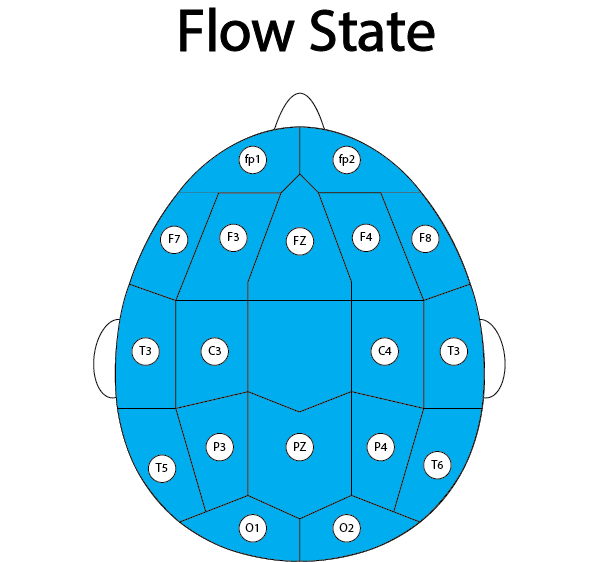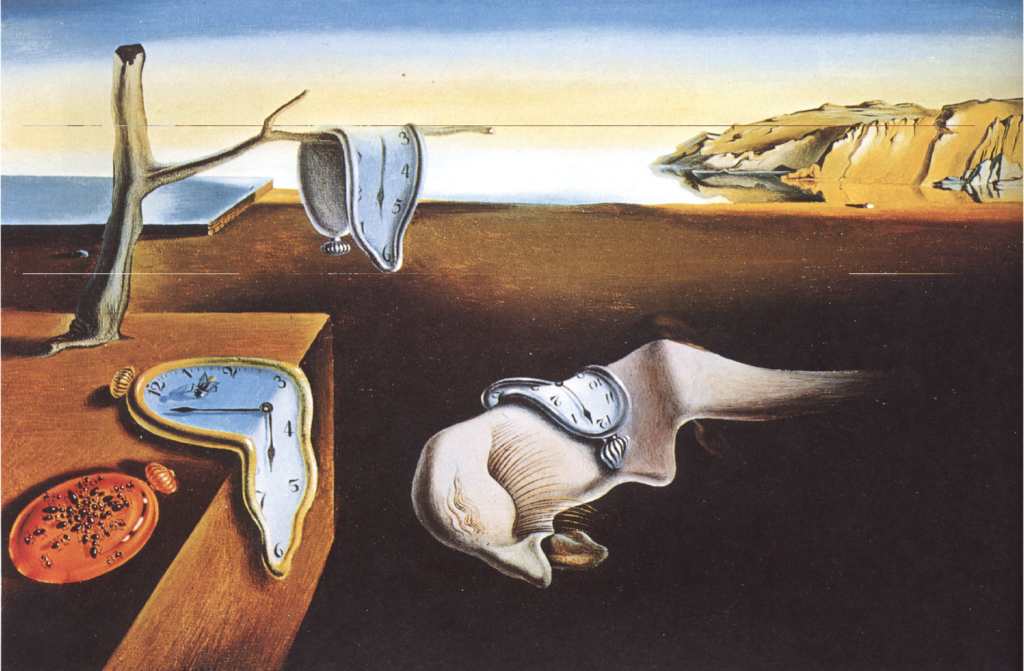The Eight Function-Attitudes In Depth
Introverted Intuition (Essence Seeker)
Introverted Intuition is primary for INTJ and INFJ types. It is the secondary function for ENTJ and ENFJ types.
Qualities of Introverted Intuition
- As an Intuitive function it is pattern-connecting, theoretical, conceptual, interpretive, and mostly future oriented.
- As an Introverted Perceiving function it is convergent, seeks depth, and takes cues from internal sources.
- Introverted Intuition is the part of the psyche that perceives otherwise unseen phenomena regarding how things developed, where things are going, and the symbolic meaning within present circumstances. It is the only Perceiving function that is completely subjective, which can make it challenging to explain.
- It asks “What does this mean?” which could also translate as ”What does this represent?”, “What’s the bigger picture here?”, and “What does this all boil down to?”
- It seeks the inner, underlying essence of things (conversations, people, nature, life, the universe, etc.)
- It seldom takes things at face value. It looks “behind the scenes” for a deeper context of what is immediately apparent.
- It explores the unseen or subtle connections that exist within physical reality. This surfaces in two primary ways:
- Through symbols that relate to outer events, people, or things to the inner world of meaning. For example, Olympia artist Robin Landsong, who leads with Introverted Intuition, illustrated the turtle below as a symbolic dedication to a woman who saved her life when she was abandoned in Africa as a child. Robin states, “Just as there is an Indian myth that the world rests on the back of a turtle, my world rested on her back during that time.” Robin illustrates herself (her essence) as the yellow sphere above the turtle.

Mama Africa by Robin Landsong
- Through unexplained “feelings” or instincts about what has happened or what will happen. For example, in a book called 37 seconds, Stephanie Arnold recounts she had tremendous premonitions she would die from a rare condition while delivering her second child. She told the medical team and her family about this but few took her seriously. However, one person on her medical team made sure they had her rare blood type on hand just in case. She did, in fact, flatline for 37 seconds but having the right blood supply nearby saved her life.
- Through symbols that relate to outer events, people, or things to the inner world of meaning. For example, Olympia artist Robin Landsong, who leads with Introverted Intuition, illustrated the turtle below as a symbolic dedication to a woman who saved her life when she was abandoned in Africa as a child. Robin states, “Just as there is an Indian myth that the world rests on the back of a turtle, my world rested on her back during that time.” Robin illustrates herself (her essence) as the yellow sphere above the turtle.
- It tends to converge on a single hunch or solution rather than diverge into multiple paths. Sometimes Introverted Intuition simply “knows” what happened, what will happen, or what needs to be done in a way that defies rational explanation. Other times its workings are the result of pattern recognition that ties things together into a cohesive, unitive explanation.
- It is predominantly future focused. People who lead with Introverted Intuition often have visions of what needs to be done and are compelled to follow through with the vision to bring it into physical reality. Stephen King is an example of an author who claims he receives his books as a “download” and then his job as a writer is simply to unpack the download that he initially received. Introverted Intuitive scientists will often have a hunch about something and perform experiments to test if the hunch is true.
Additional characteristics
Introverted Intuition is the part of us that says things like:
- This car is like a big cat. Attaching symbolism and associations in the form of names to physical things can help elevate their meaning. For example, someone might name their car Big Kitty because it is powerful, quick, and beautiful like a big cat.
- Why? Why did this happen? Why are we here? Concrete information is the least compelling for Introverted Intuition because the most “real” world lies behind the scenes where deeper connections explain why “what is” exists. Thus, the symbols, visions, and imagery that are products of Introverted Intuition hold the most interest. Physical reality can seem, in contrast, to be completely mundane.
- I have a hunch. I know where this will lead. It can be very effective at predicting future events based on current patterns or via a strong sense of knowing that presents itself without explanation.
- Aha! I found it! The Greek philosopher Archimedes was taking a bath one day when the formula for calculating the density of an object occurred to him out of the blue. He was so excited by his discovery that he famously ran through the streets naked yelling “Eureka,” which means “I found it.” Using Introverted Intuition, people can experience their realizations in such a profound and real way that it can be a puzzle for them when other people don’t see cause and effect in the same way they do or why others “resist” what they see as so obvious.
- I can’t explain it but I know it. People who lead with Introverted Intuition can have significant trouble explaining their perceptions because they are so abstract. Traditional explanations might be simply too limited to capture what is going on for them. Art and stories can offer a way to translate their inner world into the tangible world. Math and science can also create a means to make Introverted Intuitions more concrete.
Married to Introverted Intuition
"I sat down with my wife (INFJ) in a movie theater for a film festival that was absolutely full. There were several hundred people there. Before the first film started there was a raffle with about six winners. She looked at me before they started the raffle and said confidently, 'you're going to win.' I did. She does this kind of thing constantly; more than anyone else I've ever met."
Strengths
- Pattern recognition. Introverted Intuition works behind the scenes to puzzle out unseen and sometimes revelatory discoveries.
- Efficiency. Wouldn’t it be great to just get a download of your next big project rather than laboriously piecing it together?
- Depth of Meaning. It adds a sense of wonder to our lives through its symbols and ways of knowing that can be elevating and intriguing.
- Discovery. It seeks to know the unknown and can be used to light the way to uncanny solutions.
- Transcendence. It can be used to find the broadest, most inclusive perspective possible. It can look beyond apparent paradoxes to unify seemingly irreconcilable viewpoints.
- Compelling Vision. It can conjure a preferred vision of the future that the intuitor is then bound to produce either by oneself or by enlisting others to the cause.
- Transformative Agent. At its best, the realizations of Introverted Intuition, with their apparently irrational ways, have the power to transform the way we see the world, and therefore transform how we live for the better. As an example, George Ellory Hale (1868-1938) was a founder of Caltech University. According to his biographer Helen Wright, Hale took instructions for building the world’s largest telescope from a little elf that would appear on his windowsill. Was the elf real? Who cares! Hale frequently intuited, quite accurately, the way things were to be done, and set about making them happen.
Working with Introverted Intuition
- Take time to consider and examine hunches.
- Give silent time to let solutions arise.
- Don’t ever dismiss a hunch outright. Appreciate that people who use Introverted Intuition as their primary or secondary functions represent a very small portion of the population: INFJ (1.5%), INTJ(2.1%), ENTJ(1.8%), ENFJ(2.5%). It can be a vulnerable position to have a strong hunch about something come out of nowhere without a way to explain it adequately to others.
Brain insights by Dario Nardi

While other types show a whole brain blue pattern on the EEG that indicates total engagement when they do activities in their expertise, Introverted Intuiting types show this pattern when they work on problems that are unfamiliar. Their expertise seems to be the unknown.
“When presented with a problem, the Ni types seek to harness all neocortex regions in order to “realize” an answer. Imagine a troop of blind men trying to identify a secret object by touch. One man feels a trunk and says, “tree”; another detects four legs and says “table”; a third feels tusks and says “boar”. Like the blind men, each region offers a different perspective, and a zen-like synchronous state allows the person to reconcile various perspectives to arrive at a best-fit answer (an elephant).” -Dario Nardi from The Neuroscience of Personality
Quotes
“It’s a poor sort of memory that only works backwards” - Lewis Carroll (author of Alice in Wonderland)
“At the moment of vision, the eyes see nothing.” – William Golding
“Words are not the truth; they indicate the way to go, but you need to go alone, in silence. Symbols have a language that kills the words.” – Alejandro Jodorowsky
“I don’t do drugs, I am drugs” - Salvador Dali
“Human behavior flows from three main sources; desire, emotion, and knowledge.” – Plato
“Truth is ever to be found in simplicity, and not in the multiplicity and confusion of things.” - Sir Isaac Newton
“Who looks outside, dreams; who looks inside, awakes.” - Carl Jung

Persistence of Memory by Salvador Dali
Try Introverted Intuition
- What do you foresee happening as a result of your current way of life?
- What symbols resonate with you? What are the meanings of those symbols?
- What is the ultimate meaning of life?
- Ask yourself an important question, then quiet your mind. Sit for several minutes to see if an answer arises.
- Look at the picture on this page called “The Persistence of Memory” by Salvador Dali. What do you suppose it means? What is it trying to say? Is there anything symbolic within the painting?
- As soon as you wake up, write down any dreams you had. Write as many details as you can. Ask each character in your dream what they need. What are the meanings within the dream?
- Take in a multitude of perspectives on one subject. Let all the contradictions exist alongside one another. Wait patiently for a unifying perspective.
